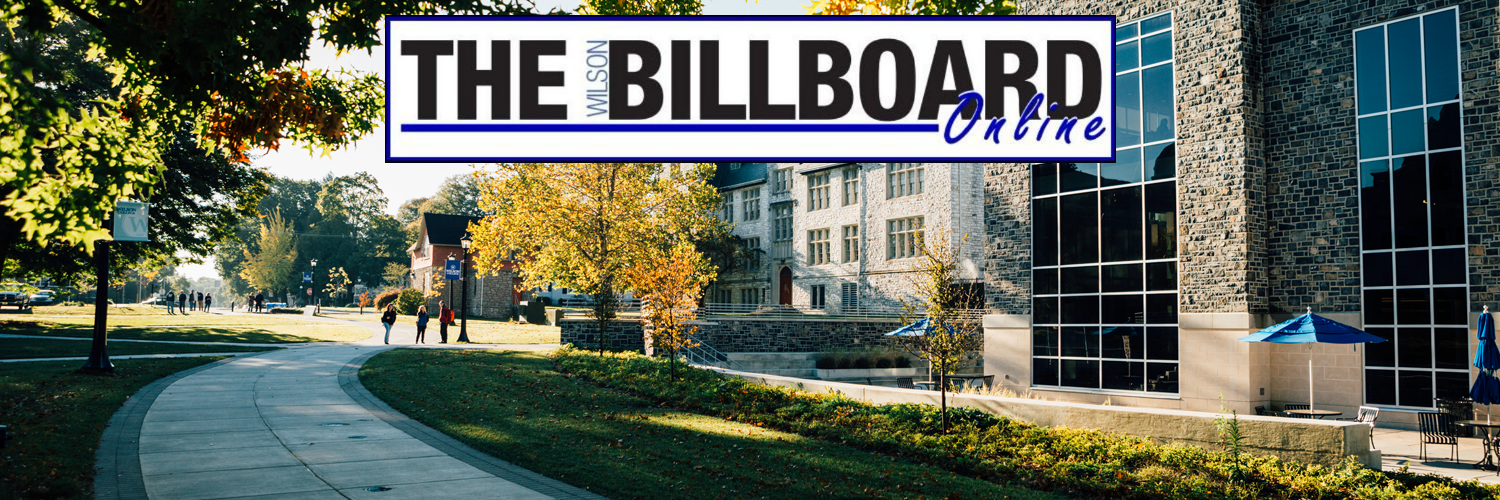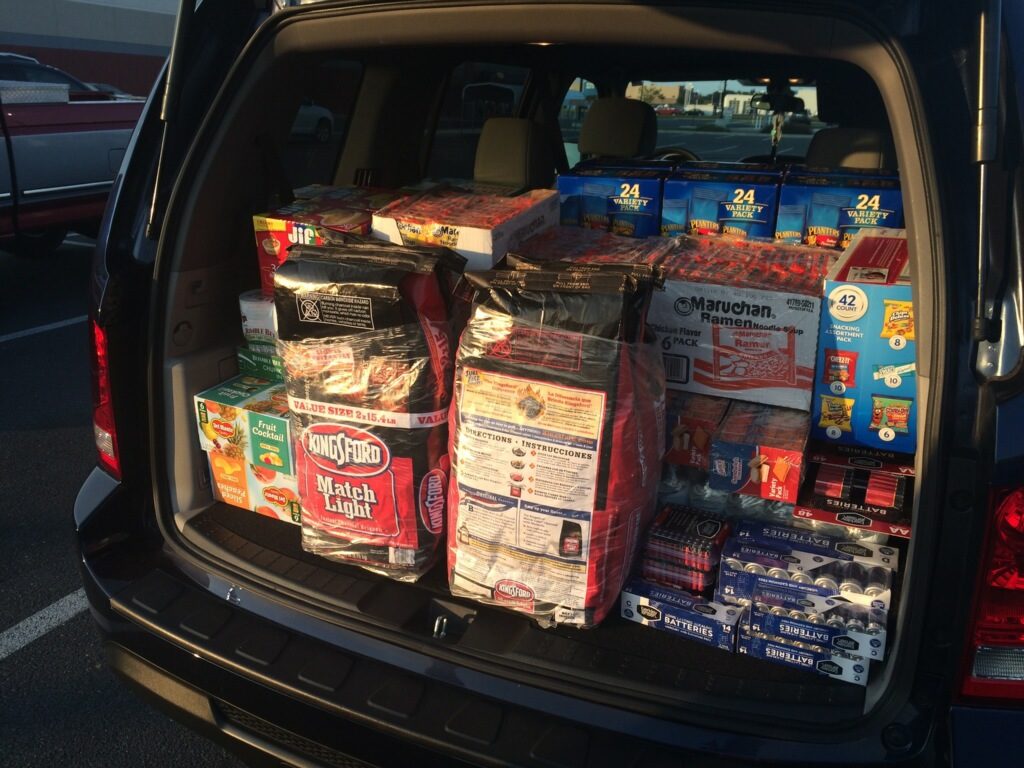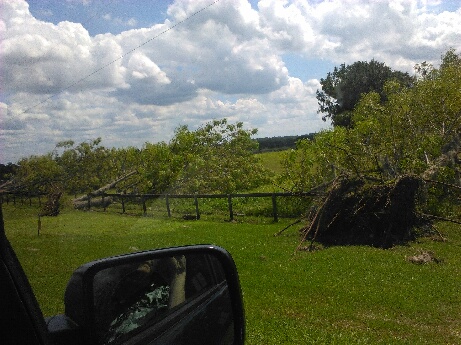The Calm After the Storm
As I drove down Interstate 81 late on a Tuesday night, high on sheer adrenaline, all I could think of were the many status updates, photos and videos that for days had dominated my newsfeed on Facebook. The island of Barbuda had been decimated. The Virgin Islands, Puerto Rico, Haiti, the Dominican Republic, and Cuba—places I have never visited—had all suffered damage in some capacity.
And then my thoughts turned to Florida…
To me, there is no feeling worse than the fear you experience when most of your family and close friends are in harm’s way—especially when you are a thousand miles away with only social media and text messages to keep your sanity intact. And sometimes (most times) even that does not help.
For those of you that may not know, I was born and raised in The Sunshine State. I lived there for 27 years of my life, and Florida will always be my home. And as a Floridian, I’ve had a few things drilled into my mind since birth: 1) hurricanes are no joke, 2) preparation is key, and 3) we help each other—particularly before, during, and after a storm. So, that being said, it should come as no surprise that I kicked into my full-on Florida girl mindset as Hurricane Irma barreled toward my home state.
About 95-percent of the people I care about were in Irma’s path. My mom, stepdad, sister, and uncle live in Central Florida. My dad, stepmom, and two of my four brothers live in the Ft. Lauderdale area. My youngest brother was in Orlando, and my husband’s aunt and uncle live near Naples. As if that wasn’t stressful enough, many cherished friends—some that I have known my entire life—live scattered in just about every city and town across the state.
I found this fact very difficult to wrap my mind and heart around. I became obsessed with the three-hour updates from the National Hurricane Center. I found myself wishing and praying that the forecast track would jog just a little more east and stay well off shore. I was so stressed that I could not sleep. So I did the only thing I could do as I watched and waited for updates—I started to plan an emergency trip south.
Many people I know had expressed that they were unable to get necessary supplies because stores were wiped out of basics like food and water. Gas had become scarce. And if stores were unable to open due to damage or lack of electricity, then it would become even more difficult to find these resources.
To put it mildly, things looked bad…and they seemed to be getting worse by the hour.
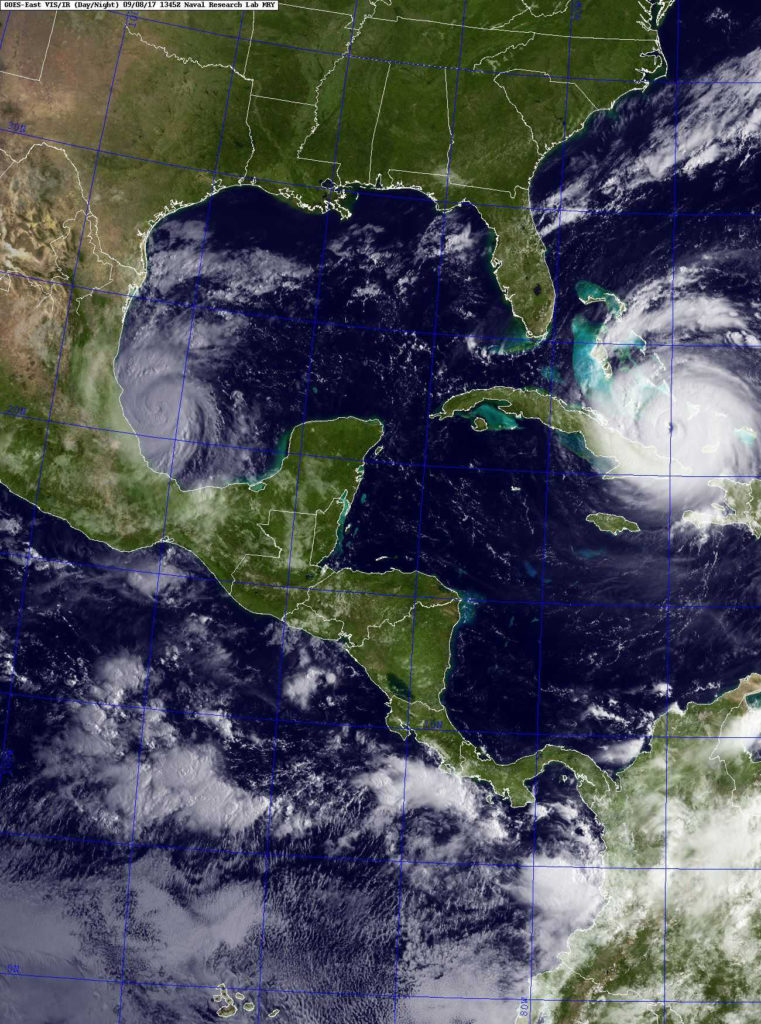
ATLANTIC OCEAN (Sept. 8, 2017) A GOES satellite image taken Sept. 8, 2017 at 9:45 a.m. EST shows Hurricane Irma, center, in the Caribbean Sea, Hurricane Jose, right, in the Atlantic Ocean, and Hurricane Katia in the Gulf of Mexico. Hurricane Irma is a Category 4 hurricane with sustained winds of 155 mph and is approximately 500 miles southeast of Miami, moving west-northwest at 16 mph. Hurricane warnings have been issued for South Florida, as the storm is expected to make landfall in Florida. (U.S. Navy photo courtesy of the NRL/Released)
Yet as hard as it was for me being 1000 miles away, the silver lining was that I was in a good position to help in any way I could once the storm had passed. I had access to supplies, I had the means to get them where they needed to go, and I could provide assistance to anyone who reached out to me.
So, with my Honda Pilot stuffed full with cases of water, canned goods, batteries, tarps, flashlights, and whatever else I could get my hands on, I arrived safely (albeit comatose) in Ocala at 6:00 p.m. Wednesday evening after a grueling 20-hour drive. By then I had already made contact with my family and most of my friends—all of whom were ok if not a little storm-weary, and few of whom had any major damage to their homes.
However, I knew many people were not as “lucky.” Millions across the state were still without power. Gas was still in short supply and flooding in some areas made travel nearly impossible. How would the poor, infirm, or elderly get what they needed?
It was during the drive down to Florida that I remembered Tom—a very generous and good friend of my mom’s who had recently lost his battle with cancer, and the church family that he had loved so much. The stories Tom told about them had always inspired me. They, along with my mom, had also helped to care for him in his final days.
I knew without a doubt that they would make sure that the supplies would go to those who needed them the most.
On Thursday afternoon, I set out with my mom to deliver supplies to Pastor Leroy Chandler with the New Saint Paul Church. The church itself had been flooded on three sides, making it impossible to enter. Instead, we were invited to a house in Flemington that was owned by the church.
The town was off the beaten path, tucked away in the more rural, unincorporated part of Marion County. As we drove, I stared in awe at the many trees that had suffered Irma’s wrath, some having fallen on powerlines and crashed down upon homes that were now uninhabitable. Power had not yet been restored to most of the area, and the ponds and streams had crested above their banks, flooding the roads knee deep in some areas.
The sight really drove home the socioeconomic divide that seems to dictate which communities will recover more quickly than others. Ocala and Gainesville were already restoring power and returning to normal. Orlando was “back to business.” But the smaller towns—some of which were dealt the worst damage—were still struggling with no clear end in sight.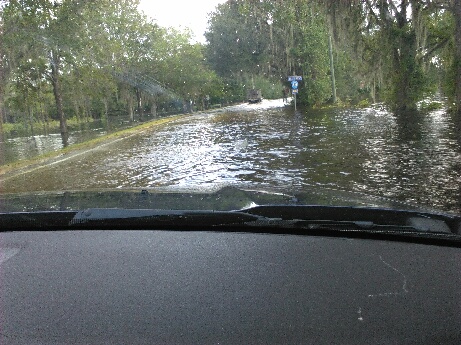
When we finally arrived at the house, I had expected to see weary and weather-worn faces. I had expected to see sadness and anxiety—defeat. Instead, I found smiles, laughter, and joy as Pastor Chandler and his family worked tirelessly clearing debris from the yard—something I later learned they had also done for others in the community since dawn that day.
I was welcomed with open arms as if I was a beloved relative returning home. Pastor Chandler, when I extended my hand, quickly pulled me into a hug. We were family now, he had said. And families hug. That was all the thanks I needed.
I could write a novel recounting everything I experienced that day and throughout my journey. Maybe I will someday. For now, I’ll summarize the three beliefs that were reaffirmed for me:
1) Even the smallest acts of kindness can have a huge impact.
2) Leading by example can inspire others to action.
3) Every person we meet in life, regardless of how well we know them or for how long, comes into our lives for a significant reason.
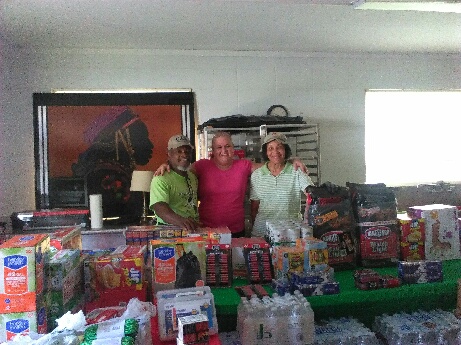 You know, a friend of mine asked a good question: Aside from “being a Floridian,” what made me drive 1000 miles with a car full of supplies to give to people I didn’t even know? After all, my family was safe. Most of my friends were ok. I could have just donated money or items to an organization like the Red Cross or Samaritan’s Purse.
You know, a friend of mine asked a good question: Aside from “being a Floridian,” what made me drive 1000 miles with a car full of supplies to give to people I didn’t even know? After all, my family was safe. Most of my friends were ok. I could have just donated money or items to an organization like the Red Cross or Samaritan’s Purse.
Honestly, I’m still working through my answer to that question. But I think it has something to do with my own desire to make a difference in the world and the hope that I might inspire others to do the same. The world would be a much better place if we could all just step out of our own little comfortable bubbles once in a while and help each other—especially when we have the means to do so.
I think Pastor Chandler drove that point home for me. He said that I could have easily stayed home and comfortable in my own little bubble, but I didn’t. And even though I had no idea where I would provide assistance when I set out, I ended up in a tiny town off the beaten path that most likely no one would have even known needed help. I made a difference. And in turn I met some amazing people that inspired me even more than I thought possible.
Floridians are a pretty resilient bunch. And yeah, sometimes (most of the time) we’re a little crazy. But the one thing that I truly love about being a Floridian is that in the worst of times, we have each other’s backs whether we still live in the state or not, whether the people we help are Floridian or not.
I will always be proud of my “Florida heritage,” and of my “Floridian family.”
